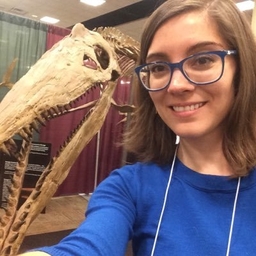
Meghan Rosen
Life Sciences Writer at Science News
Life sciences writer at @ScienceNews. Usually reading, knitting, or eating ice cream. Email me tips at [email protected]
Articles
-
3 weeks ago |
sciencenews.org | Meghan Rosen
ORLANDO, Fla. — Beans are no fruit, but they may be magical for your health. In a small study, eating a daily cup of chickpeas lowered people’s cholesterol, scientists report June 3 at the annual American Society for Nutrition meeting. And a cup of either chickpeas or black beans per day reduced inflammation.
-
3 weeks ago |
sciencenews.org | Meghan Rosen
ORLANDO, Fla. — Eating plastic might muck with the gut. Mice fed tiny bits of polystyrene experienced health problems including metabolic issues and signs of organ injury, scientists reported June 1 at the annual American Society for Nutrition meeting. The findings add to a small but growing stack of evidence that ingesting microscopic plastic particles may directly harm animals’ health, says Amy Parkhurst, a molecular physiologist at the University of California, Davis.
-
3 weeks ago |
snexplores.org | Meghan Rosen
allergy: The inappropriate reaction by the body’s immune system to a normally harmless substance. Untreated, a particularly severe reaction can lead to death. arachnid: A group of invertebrate animals that includes spiders, scorpions, mites and ticks. Many have silk or venom glands. bacteria: (singular: bacterium) Single-celled organisms. These dwell nearly everywhere on Earth, from the bottom of the sea to inside other living organisms (such as plants and animals).
-
1 month ago |
sciencenews.org | Meghan Rosen
With Joe Biden’s recent diagnosis of an aggressive form of prostate cancer, the former U.S. president joins a growing group of people newly coping with the disease. Biden, 82, represents one of more than 300,000 new cases of prostate cancer estimated to occur in the United States in 2025. And the incidence of this disease, the most common cancer in males, is rising.
-
1 month ago |
sciencenews.org | Meghan Rosen
Screening for cervical cancer many soon be possible within the privacy of your own home. On May 9, the U.S. Food and Drug Administration approved the Teal Wand, a tamponlike tool people can use to collect cells from their vagina. It’s the first self-collection device approved for at-home use in the United States and could broaden access to cervical cancer screening. The concept is simple.
Try JournoFinder For Free
Search and contact over 1M+ journalist profiles, browse 100M+ articles, and unlock powerful PR tools.
Start Your 7-Day Free Trial →X (formerly Twitter)
- Followers
- 1K
- Tweets
- 1K
- DMs Open
- Yes

RT @FloeFoxon: Life sciences writer @megdrosen has written an excellent piece on my folk zoology work, featuring statistical and aquatic ec…

RT @jlorileman: I loved my internship at @ScienceNews, and I hope they (and @Society4Science) will do the right thing and swiftly recognize…

RT @snmediaguild: We’ve got news! The workers of @ScienceNews and @SN_Explores are unionizing. We’re taking this step with 70% staff suppor…